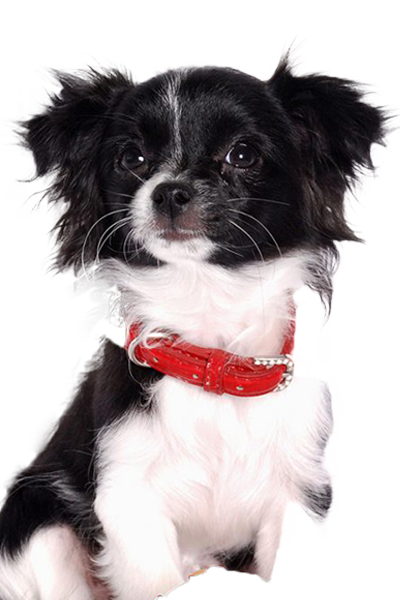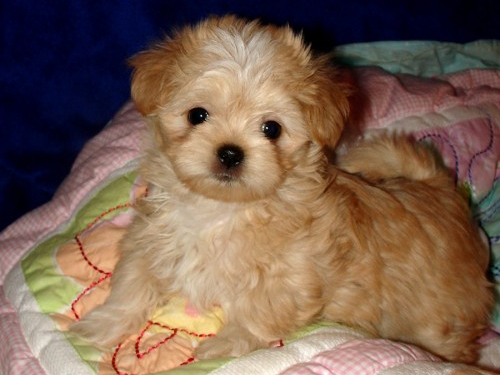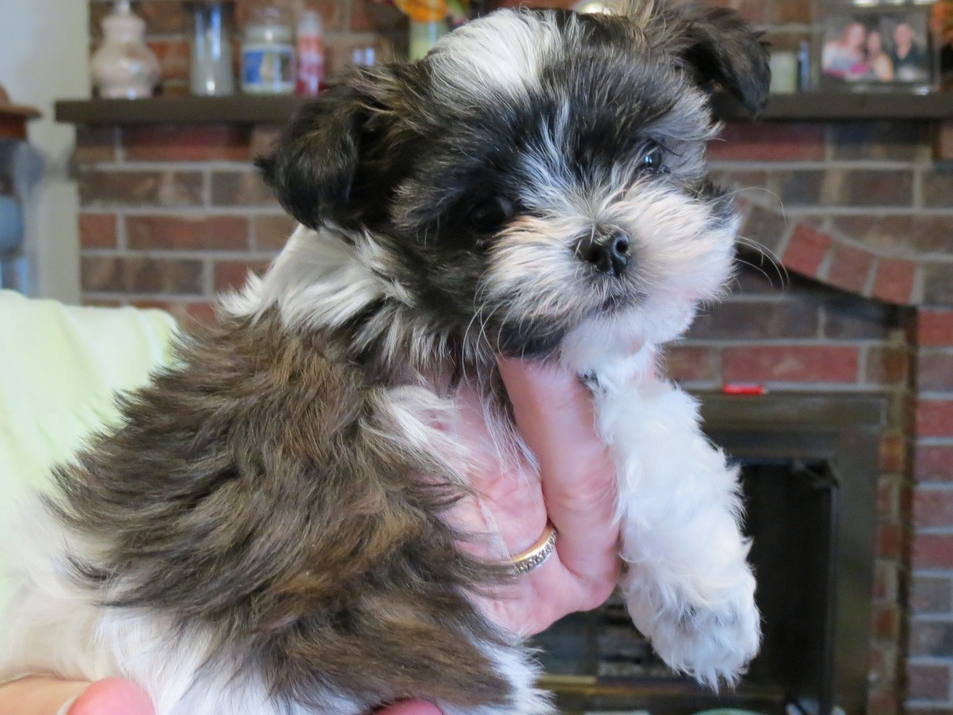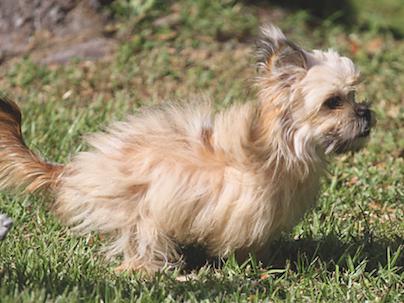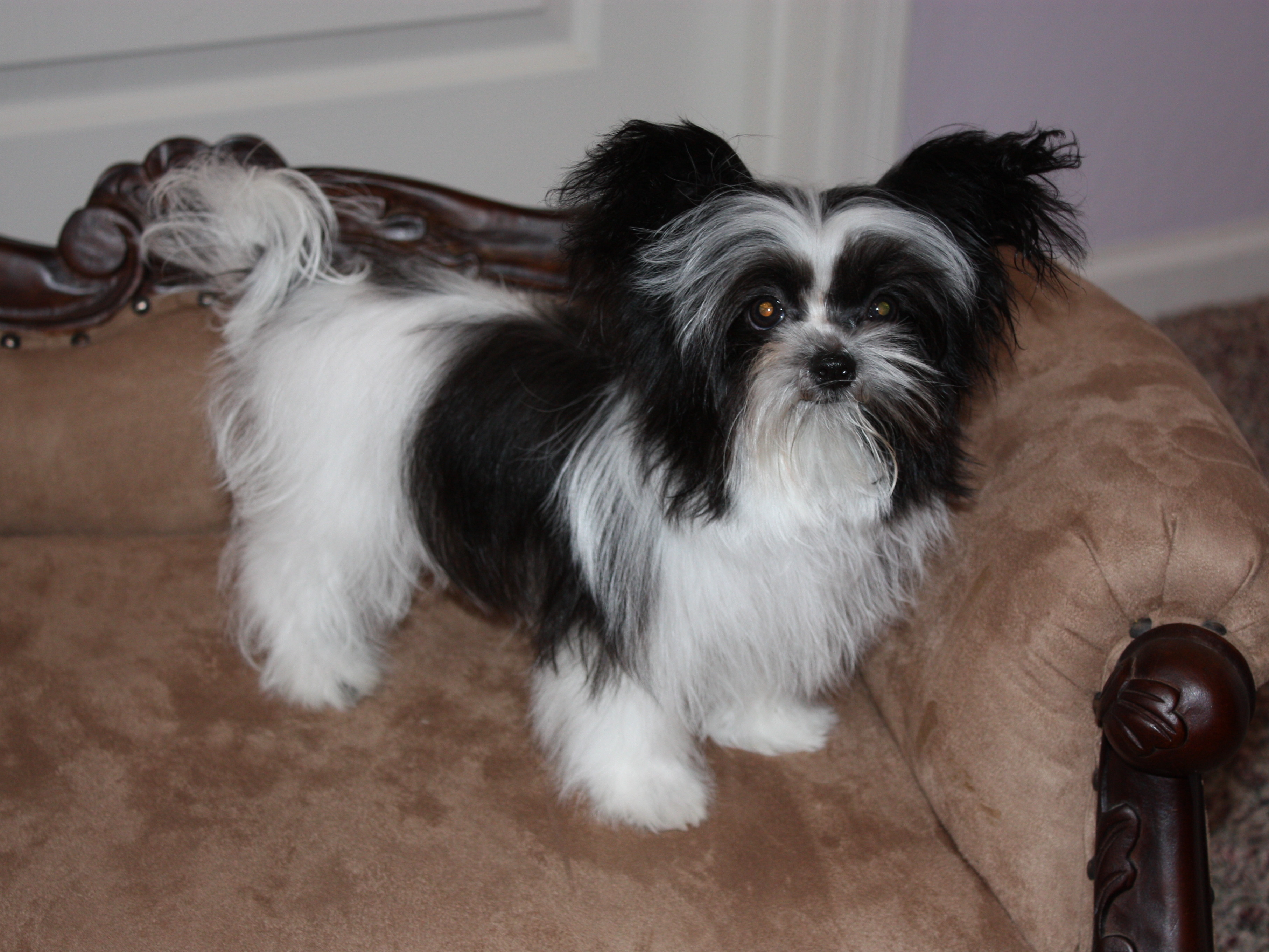
Mi-Ki Breed Pictures
Vital Breed Stats
| Height: | 25 - 31 cm M | 25 - 31 cm F |
| Weight: | 2 - 5 kg M | 2 - 5 kg F |
| Breed Group: | Pastoral Dog Group |
| Life Expectancy: | 13 - 15 years |
| KC Registered: | No |
Breed Characteristics
| Size: |  |
| Grooming: |  |
| Exercise Level: |  |
| Trainability: |  |
| Barking Level: |  |
| Good with Children: |  |
| Good with other pets: |  |
| Affectionate: |  |
| Protective: |  |
Give a thumbs up if you love the Mi-Ki

0
More About the Breed
History
The name of this breed is said to mean “new life” or “new beginning.” However, how the Mi-Ki came to be is puzzling as there are conflicting stories about its development. One version said that this canine emerged after Micki Mackin crossbred small Shih Tzus with the Maltese, Japanese Chin, and the Papillon. This story was not verified as there were no documents kept that supported the crossbreeding’s progress.
Another version said that Milwaukee, Wisconsin resident Rev. Maureen van Wormer developed this small canine over a period of 30 years. The process began in 1959 after she secured two Shih Tzus imported from England. She then bred one of these Shih Tzu’s offspring to other breeds. She picked those that had traits she wanted to include in the new dog breed. Aside from the Shih Tzu, the other breeds are the Papillon, Yorkshire Terrier, Tibetan Spaniel, Maltese, and Japanese Chin.
The crossbreeding reportedly involved 30 dogs until 1989, when a pair of crossbreeds was considered the final version of the Mi-Ki. Van Wormer, as the story goes, named the dogs after her childhood nickname, “Mikki.” It has since been considered a purebred as it is bred Mi-Ki to Mi-Ki.
Although there are more versions to the history of this new canine, there are facts that Mi-Ki breeders generally agree on. One is that the dog emerged in the 1980s and was created as a companion dog. Further, the Maltese, Japanese Chin, and Papillon are part of its mix. Today, the Mi-Ki is still not recognised by The Kennel Club and remains small in number. Despite this, it is gradually growing in popularity in other parts of the world.
Appearance
The Mi-Ki’s average height is no more than 28 cm. Its weight reaches up to 4.5 kg. Because of its small stature, it was called the “pocket” pet. It has large round eyes on its slightly rounded head, with a black or self-coloured nose. Its winged ears, which are one of its most distinctive features, can be dropped or erect and has some feathering.
Its compact body size is proportionate to its overall frame and does not look stumpy or long-legged. It has a straight and level topline with a chest that is medium in depth. Its tail, called a “crowd pleaser” among owners, is set high and curls over its body.
The Mi-Ki’s coat can be 2 types: long or smooth. The long-coated variety has a single-length straight and silky hair. It also has a beard and a moustache on its face. The short-coated type has medium-length fur. Unlike the long-coated kind, the smooth coat variety has no beard or moustache.
The Mi-Ki coat comes in a wide variety of colours and combinations. It can be black, brown, chocolate, mahogany, beige, tan red, blue, apricot, sable, gold, brindle, fawn, silver, or white. Solid coloured Mi-Kis are rare.
Grooming
Temperament
The Mi-Ki is playful, affectionate, happy, sweet, and loving. Its charming expression, calm demeanour, and eagerness to please add to its allure.
This breed is also known to be more like a cat than a dog. It likes to wash its own face, sit in the sun, and perch on high places overseeing things from above. However, it is not one to withhold its affection as it loves people. It is a very sociable pooch that can live in a variety of settings, even in apartments.
As a lap dog, it loves cuddling and clowning about. It gets along with other animals in the home. It is not a very vocal breed but will bark as a warning. Despite this, it is not recommended as a watchdog.
Although originally bred as a companion, the Mi-Ki is gradually gaining a reputation for being sensitive to the feelings and needs of patients. It has since been tapped to serve as therapy dogs.
Intelligence
Nutrition
It is important to provide Mi-Ki with high-quality dog food that fits his age and breed such as specially-formulated dog food for small breeds. It is particularly designed to cater to the nutritional needs of small dogs like the Mi-Ki.
Avoid choosing commercial dog food even if it costs less than premium-quality ones. Most commercial food contains artificial additives and cheap fillers. Always provide fresh water for your Mi-Ki to make sure he is properly hydrated.
Feeding
Health
- Hypothyroidism
- Respiratory problems (from short muzzles)
- Distichiasis (extra eyelashes)
Exercise
Cost of Ownership
The Mi-ki is a rare breed and acquiring one is not as easy as the other canine types. When there is one pup available, it may cost between £1,300 and £2,300 to buy. You need to ensure that you are getting a Mi-Ki puppy from an ethical breeder with a proven track record. This is to avoid getting a dog with a host of health issues. DNA testing or health screening can be done to ensure you are getting a well-bred pup.
Is a Mi-Ki Right for You?
- This dog may have cat-like traits but it is affectionate and sweet to its owners.
- It is very intelligent and easy to train.
- The Mi-Ki is adaptable and can thrive in apartments.
- It is generally a quiet canine and not likely to bark excessively.
- Its grooming is low maintenance and its coat sheds minimally.
- This purebred is great for families but is not recommended as a watchdog.
